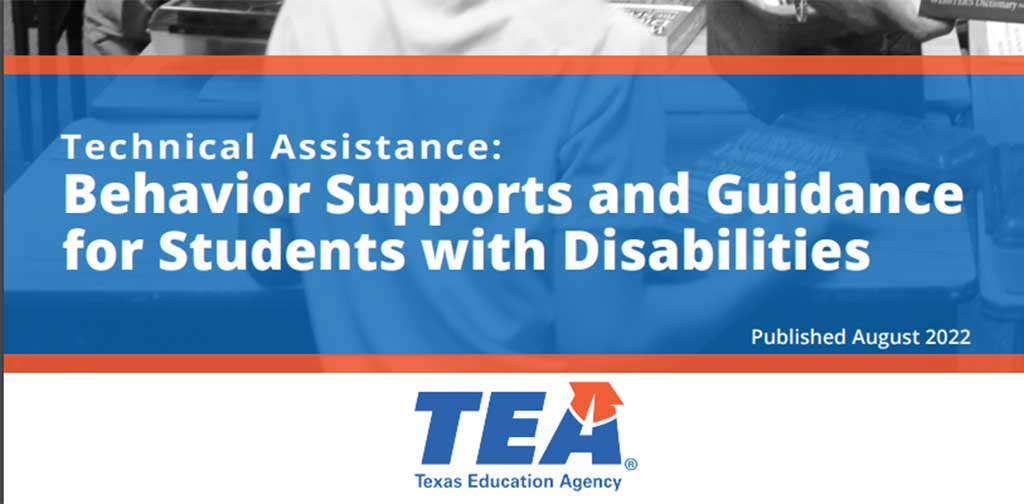The definition of “child with a disability” explains how and why children are found to be eligible – or ineligible – for special education and related services under IDEA. A “child with a disability,” as defined by IDEA, is entitled to a free appropriate public education that emphasizes special education and related services designed to meet the child’s unique needs.
IDEA’s definition and beyond
IDEA’s definition of “child with a disability” includes definitions of specific disabilities such as intellectual disability, learning disabilities, and other health impairment. IDEA’s definitions guide how states define disability and who is eligible for FAPE. So it’s important for parents to know both how IDEA and their state define individual disabilities.
Note that, in order to fully meet the definition (and eligibility for special education and related services) as a “child with a disability,” a child’s educational performance must be adversely affected due to the disability. Note also that “educational performance” is not limited to academic performance.
Where “child with a disability” is defined in IDEA | 34 CFR §300.8
The complete definition of “child with a disability” is quite long, so we have not included the verbatim definition in this reference list, only the first paragraph of the definition, which reads:
§300.8 Child with a disability
(a) General. (1) Child with a disability means a child evaluated in accordance with §§300.304 through 300.311 as having an intellectual disability**, a hearing impairment (including deafness), a speech or language impairment, a visual impairment (including blindness), a serious emotional disturbance (referred to in this part as ‘‘emotional disturbance’’), an orthopedic impairment, autism, traumatic brain injury, an other health impairment, a specific learning disability, deaf-blindness, or multiple disabilities, and who, by reason thereof, needs special education and related services.
Categories of Disability Under IDEA
The IDEA’s disability terms and definitions guide how States in their own turn define disability and who is eligible for a free appropriate public education under special education law. The definitions of these specific disability terms from the IDEA regulations are shown beneath each term listed below. Note, in order to fully meet the definition (and eligibility for special education and related services) as a “child with a disability,” a child’s educational performance must be adversely affected due to the disability.
[rescue_box color=”blue” text_align=”left” width=”100%” float=”none”]
Considering the Meaning of “Adversely Affects”
You may have noticed that the phrase “adversely affects educational performance” appears in most of the disability definitions. This does not mean, however, that a child has to be failing in school to receive special education and related services. According to IDEA, states must make a free appropriate public education available to “any individual child with a disability who needs special education and related services, even if the child has not failed or been retained in a course or grade, and is advancing from grade to grade.” [§300.101(c)(1)]
[/rescue_box]
In the list below, if a disability term is linked, clicking on the link will take you to a fact sheet for that particular disability and to other related information.
1. Autism…
…means a developmental disability significantly affecting verbal and nonverbal communication and social interaction, generally evident before age three, that adversely affects a child’s educational performance. Other characteristics often associated with autism are engaging in repetitive activities and stereotyped movements, resistance to environmental change or change in daily routines, and unusual responses to sensory experiences. The term autism does not apply if the child’s educational performance is adversely affected primarily because the child has an emotional disturbance, as defined in #5 below.
A child who shows the characteristics of autism after age 3 could be diagnosed as having autism if the criteria above are satisfied.
2. Deaf-Blindness…
…means concomitant [simultaneous] hearing and visual impairments, the combination of which causes such severe communication and other developmental and educational needs that they cannot be accommodated in special education programs solely for children with deafness or children with blindness.
3. Deafness…
…means a hearing impairment so severe that a child is impaired in processing linguistic information through hearing, with or without amplification, that adversely affects a child’s educational performance.
…for children from birth to age three (under IDEA Part C) and children from ages three through nine (under IDEA Part B), the term developmental delay, as defined by each State, means a delay in one or more of the following areas: physical development; cognitive development; communication; social or emotional development; or adaptive [behavioral] development.
…means a condition exhibiting one or more of the following characteristics over a long period of time and to a marked degree that adversely affects a child’s educational performance:
(a) An inability to learn that cannot be explained by intellectual, sensory, or health factors.
(b) An inability to build or maintain satisfactory interpersonal relationships with peers and teachers.
(c) Inappropriate types of behavior or feelings under normal circumstances.
(d) A general pervasive mood of unhappiness or depression.
(e) A tendency to develop physical symptoms or fears associated with personal or school problems.
The term includes schizophrenia. The term does not apply to children who are socially maladjusted, unless it is determined that they have an emotional disturbance.
…means an impairment in hearing, whether permanent or fluctuating, that adversely affects a child’s educational performance but is not included under the definition of “deafness.”
…means significantly subaverage general intellectual functioning, existing concurrently [at the same time] with deficits in adaptive behavior and manifested during the developmental period, that adversely affects a child’s educational performance.
(Editor’s Note, February 2011: “Intellectual Disability” is a new term in IDEA. Until October 2010, the law used the term “mental retardation.” In October 2010, Rosa’s Law was signed into law by President Obama. Rosa’s Law changed the term to be used in future to “intellectual disability.” The definition of the term itself did not change and is what has just been shown above.
…means concomitant [simultaneous] impairments (such as intellectual disability-blindness, intellectual disability-orthopedic impairment, etc.), the combination of which causes such severe educational needs that they cannot be accommodated in a special education program solely for one of the impairments. The term does not include deaf-blindness.
9. Orthopedic Impairment…
…means a severe orthopedic impairment that adversely affects a child’s educational performance. The term includes impairments caused by a congenital anomaly, impairments caused by disease (e.g., poliomyelitis, bone tuberculosis), and impairments from other causes (e.g.,cerebral palsy, amputations, and fractures or burns that cause contractures).
…means having limited strength, vitality, or alertness, including a heightened alertness to environmental stimuli, that results in limited alertness with respect to the educational environment, that—
(a) is due to chronic or acute health problems such as asthma, attention deficit disorder or attention deficit hyperactivity disorder, diabetes, epilepsy, a heart condition, hemophilia, lead poisoning, leukemia, nephritis, rheumatic fever, sickle cell anemia, and Tourette syndrome; and
(b) adversely affects a child’s educational performance.
11. Specific Learning Disability…
…means a disorder in one or more of the basic psychological processes involved in understanding or in using language, spoken or written, that may manifest itself in the imperfect ability to listen, think, speak, read, write, spell, or to do mathematical calculations. The term includes such conditions as perceptual disabilities, brain injury, minimal brain dysfunction, dyslexia, and developmental aphasia. The term does not include learning problems that are primarily the result of visual, hearing, or motor disabilities; of intellectual disability; of emotional disturbance; or of environmental, cultural, or economic disadvantage.
12. Speech or Language Impairment…
…means a communication disorder such as stuttering, impaired articulation, a language impairment, or a voice impairment that adversely affects a child’s educational performance.
…means an acquired injury to the brain caused by an external physical force, resulting in total or partial functional disability or psychosocial impairment, or both, that adversely affects a child’s educational performance. The term applies to open or closed head injuries resulting in impairments in one or more areas, such as cognition; language; memory; attention; reasoning; abstract thinking; judgment; problem-solving; sensory, perceptual, and motor abilities; psychosocial behavior; physical functions; information processing; and speech.
The term does not apply to brain injuries that are congenital or degenerative, or to brain injuries induced by birth trauma.
14. Visual Impairment Including Blindness…
…means an impairment in vision that, even with correction, adversely affects a child’s educational performance. The term includes both partial sight and blindness.



